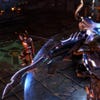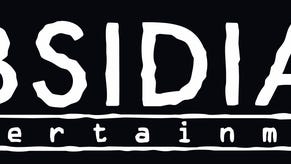Dungeon Siege III
Sieging is believing.
Then there's the character stuff. Playing as a Guardian class gives you three stances to juggle – one-handed or two-handed attacks, alongside defence – and levelling up sees you unlocking a new attribute – think of it as a special move – for each in turn. While the choice of specials initially seems rather limited, compared to the gaudy standards of something like Torchlight, each attribute can be tailored with proficiency points as you level further, flipping your one-handed Shield Pummel from a knockback to a stun or even offensive move, for example, or allowing you to turn the brutal two-handed Blade Dash from a disco-effect freight train into a laser-targeted precision blast that really rips the health points out of specific foes.
Specials require you to charge your Will meter by pulling off normal attacks – and it's wise to switch between one- and two-handed swings even in standard combat, as the slower, heavier option will strike multiple enemies at once – while talent points complete the picture by adding persistent character perks such as increased damage during criticals.
You'll have plenty of opportunities to put your tricked-out dungeon-runner through his or her paces, too, as across the spread of the meaty central campaign and its numerous side-quests, there seem to be a lot of bandits, sorcerers and other monsters to chew into. In the half-hour chunk of game I'm shown, pursuing the main narrative leads to a decent rumble deep within a subterranean witch's lair (the boss confrontation is of the teleporting-and-ranged-attack variety, which is not as much of a pain with the melee-only Warrior as you might expect) while a village's worth of optional missions, many of which lead to mini-bosses of their own, offer plenty of extra-curricular head bashing.
A nasty lakeside excursion sees you hacking an unpleasant fish man to pieces, for example, while elsewhere there's a bandit with a lot of friends for you to contend with. Bosses of all shapes and sizes often come with auras attached (a red circle damages anyone within it, a blue means they're pumping up their cronies, and a purple means they're from early 1970's northern California and can't wait to read you your Tarot) providing a touch of strategy to proceedings, while almost all fights dump you into a mix of different baddies, some standing back and picking at you with muskets, while others come forward and try to nut you more directly.
Throw in an optional breadcrumb trail – it's turned off as standard, but should be useful for when you're returning to the game again after a few days off – and a Mass Effect-style dialogue wheel that allows you to skip through any lengthy conversation options and get straight to the next bit of looting, and you've got a laudably direct action RPG. While Obsidian's yet to reveal the full range of playable classes, and co-op and multiplayer remains under wraps, what's been shown so far is confident, likable, and engaging. Fingers crossed, then.










